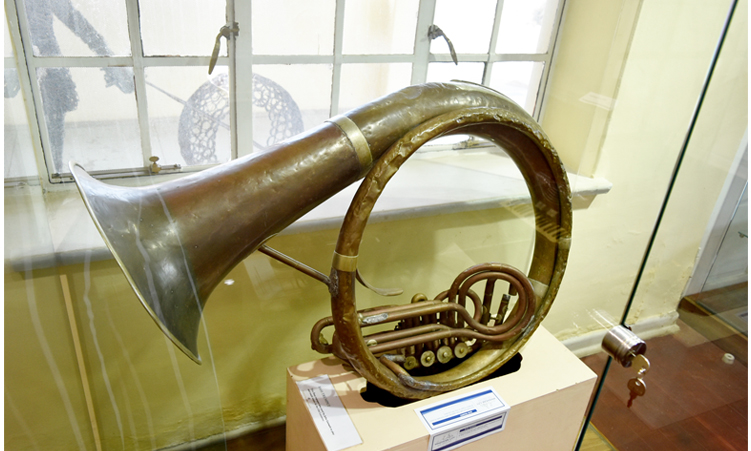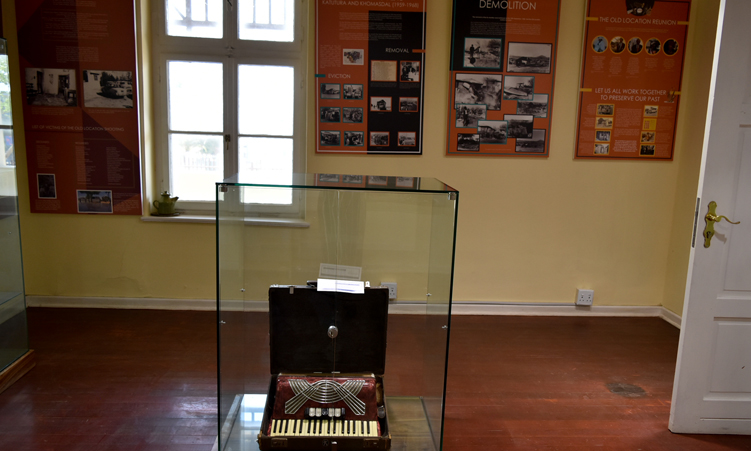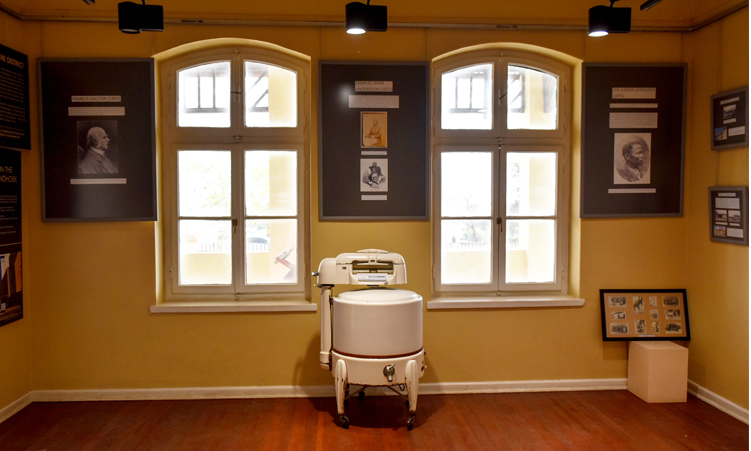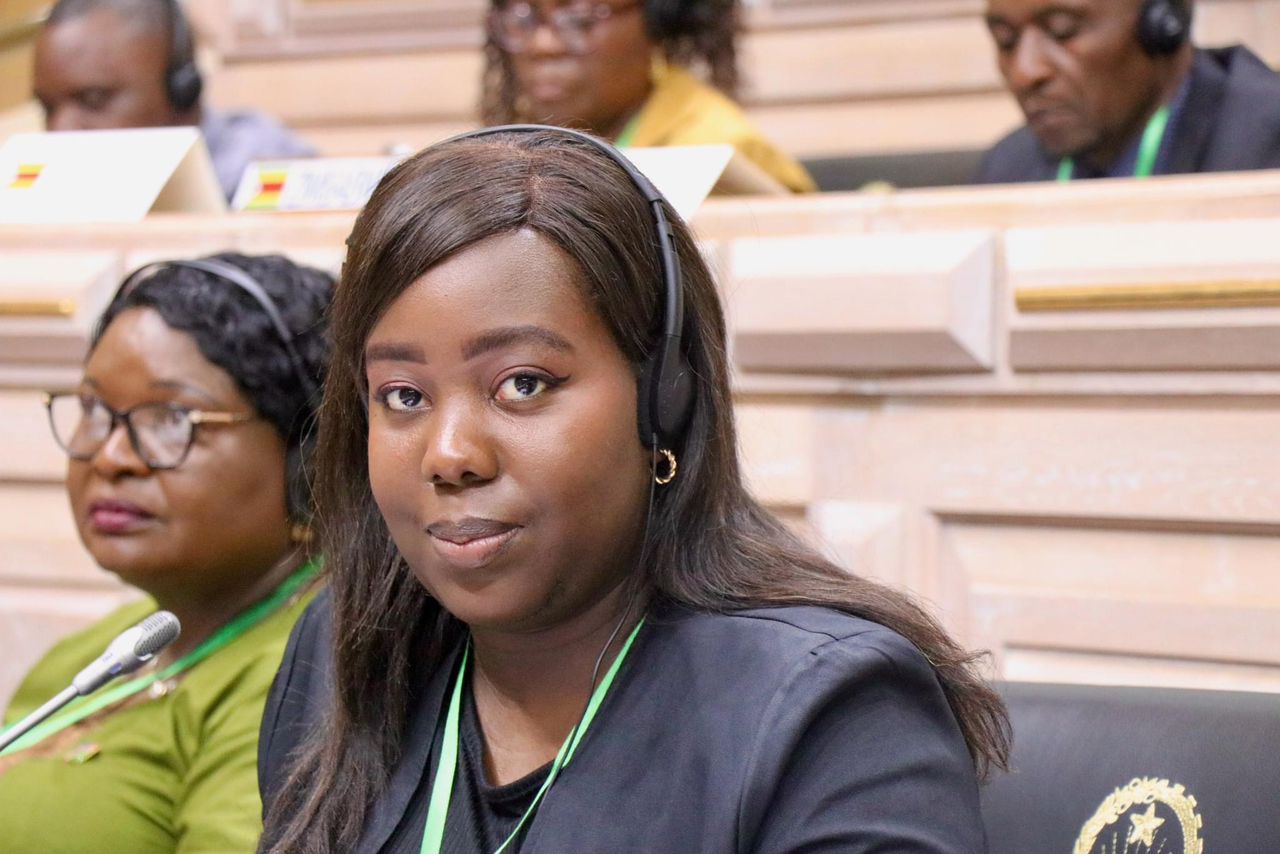Located opposite the Bank Windhoek Theatre School on Robert Mugabe Avenue, the Windhoek City Museum opened its doors to the public in November 2020.
The museum is set in a historical colonial building, built between 1907 and 1908. This was home to former German colonial officer count Georg von Stillfried und Rattonitz, who wrote recommendations to Kaiser Willhelm II about what strategies to use during the Nama and Ovaherero genocide, and who served under the infamous general Lothar von Trotha.
Post-independence it housed government employees until it was turned into the Windhoek City Museum.
When entering the well-kept and very rocky Namibian-style garden, one notices an array of indigenous plants with placards sharing interesting facts about their uses, from medicines and ointments to treat various ailments, or even as a key ingredient in making delicious tea.

WHAT’S IN A NAME?
The reception of the museum starts off by sharing the various names of Windhoek over the years – from
/Ae//Gams in Khoekhoegowab to Otjomuise in Otjiherero. It also shares that at some point, Windhoek was called Barmen by German Rhenish missionaries, and even Concordiaville, before settling on the name Windhoek, after Jonker Afrikaner’s home, Winterhoek, near Tulbagh in South Africa.
Windhoek has also sometimes been called the Windy Corner, but looking at the rich history of the name really gets one thinking about the hidden history of the capital city.
WINDHOEK’S HISTORY
The first section of the museum looks at pre-colonial Windhoek, and details diary entries from missionaries and other travellers who came across Windhoek and found it inhabited by Afrikaner and other groups.
Afrikaner had built a church that could house up to 500 people, and he settled in Windhoek with around 2 500 Oorlam, Nama, Damara, Ovaherero and San people.
But conflicts with rival leaders forced them to abandon Windhoek, and it was settled again by Curt von François, who built the Alte Feste as a fort for the German colonial government.
PREHISTORIC
There are also some fun facts about Windhoek’s monuments and spaces, like the mammoth sculpture in Zoo Park where the remains of a mammoth were found by archaeologists, indicating that the area had natural springs and was a meeting point for animals and humans alike during prehistoric times. Windhoek was after all settled by Afrikaner and all those before him because of its access to water in the form of hot springs.
HISTORICAL OBJECTS AND ARTEFACTS
Peppered across the museum are historical objects like a tape recorder, a police baton, tea sets and even a manual washing machine that was used long ago. It helps paint the picture of how Windhoek has changed over time, alongside technological advances and inventions, and helps one imagine what life was like in days gone by.
INDEPENDENCE STRUGGLE
There is a section of the exhibition that records Windhoek’s role in the struggle for independence, from assassinations like that of Immanuel Shifidi at a school (which later prompted the school to change its name to Immanuel Shifidi Secondary School), to the Continental Hotel bombing, police raids, and even Windhoek’s last execution.
THE OLD LOCATION
With a room dedicated entirely to the Old Location, you get to travel to a time before Windhoek’s black residents were forcefully and violently moved from their homes in the Old Location (parts of modern-day Windhoek West, Hochland Park and Pionierspark), to the outskirts of town in new settlements named Katutura and later Wanaheda. The Old Location uprising occurred on 10 December 1959, and more than 11 people lost their lives, while many others were injured.
Interesting fact: Wanaheda was the acronym for Wambo, Nama, Herero and Damara, keeping with the theme of racially segregating people according to their tribe under apartheid.
You also get to see images from the Old Location, from churches, sport clubs, bars, and even a large brass trumpet that was used in one of the Old Location bands.
Residents of the Old Location were invited to a reunion a few years ago, where they got to share their stories with each other and enjoyed music and dance like they would have in the old days. You can request headphones from the curators and receptionist to watch a video of the reunion and look at a slideshow of images from the time.
The public is encouraged to share their images and stories, or come help identify some of the people in the images.
In the reception of the museum is a large map of the Old Location and a book that has a list of family names and the block in which they lived. This is truly a touching way to learn about our own families and their history in the Old Location, by trying to pinpoint on the map exactly where they lived.
NATURE AND WILDLIFE
While Windhoek might be a bustling capital city, nature and wildlife still exists within and alongside it, from our birds, reptiles and even the extreme weather conditions that transform our dry riverbeds into floods during the rainy season.
The museum narrates the importance of recycling and water conservation, and has a water filtration system on display (the same that is used by the water reclamation plant) to show visitors how water is recycled in Windhoek.
The last room houses temporary exhibitions, such as one on the Windhoek Fire Department, with plans to host roving exhibitions in future.
All in all, the Windhoek City Museum is a must-visit for the entire family. It helps you learn more about the nation’s capital and its history, and helps instil a sense of pride in how far we have come, stoking a sense of excitement about the city’s potential in future.
Admission is free, and the museum is open Mondays to Fridays from 08h00 until 16h00, but closed for lunch between 13h00 and 14h00.
It is located at the corner of Robert Mugabe Avenue and Schwerinsburg Street. Contact them at (061) 290 2502 or 290 3450 to find out more information about visiting times and school tours.
Stay informed with The Namibian – your source for credible journalism. Get in-depth reporting and opinions for
only N$85 a month. Invest in journalism, invest in democracy –
Subscribe Now!












